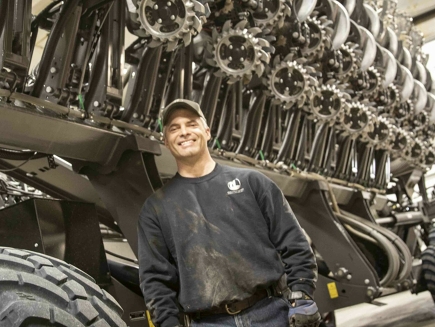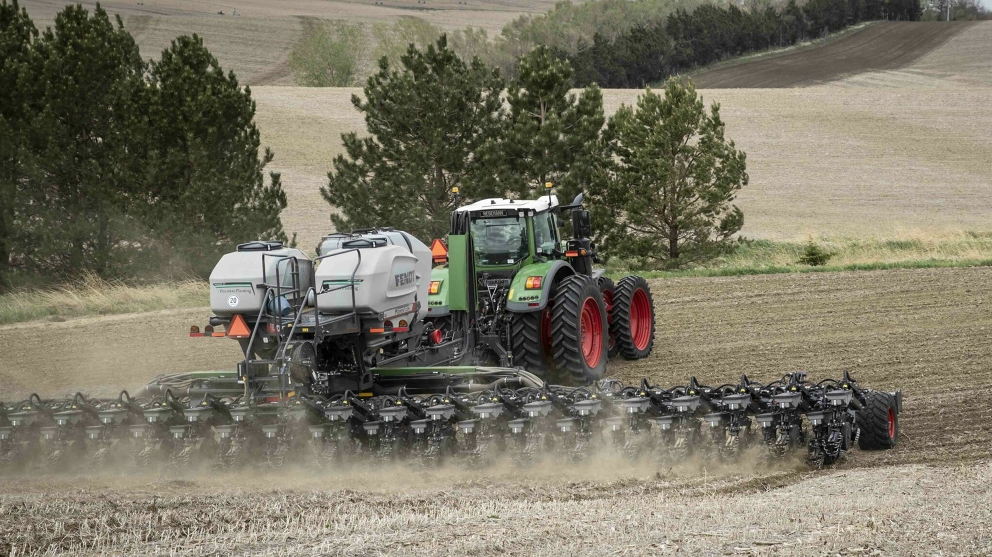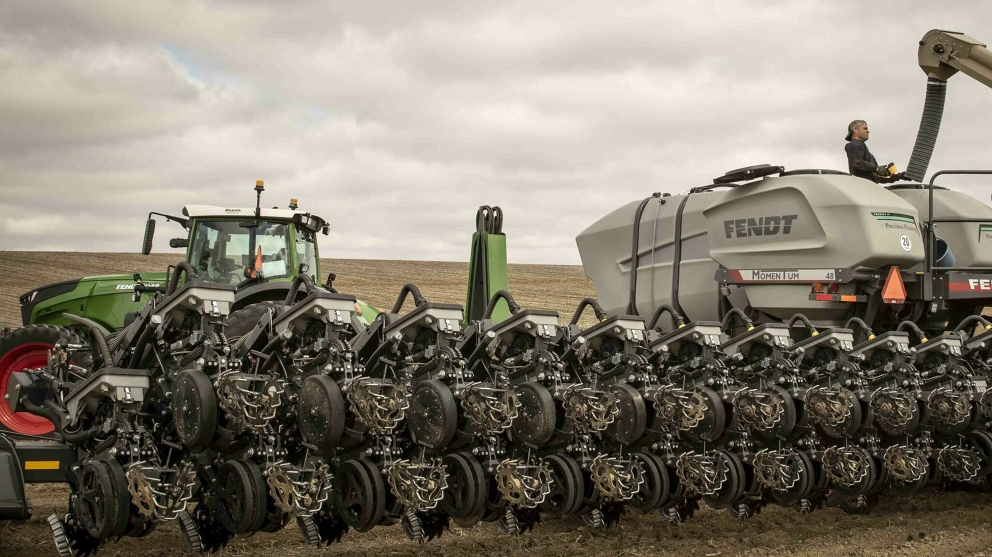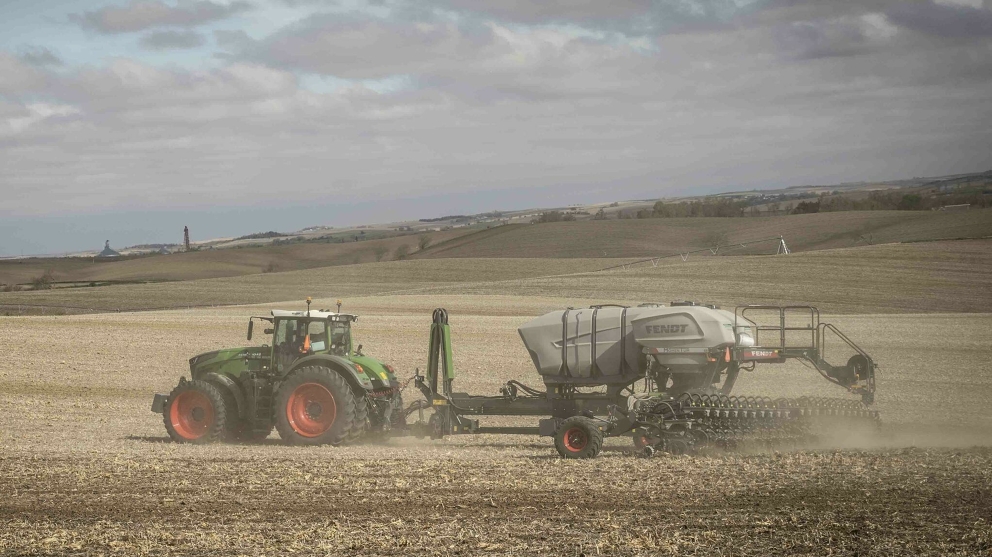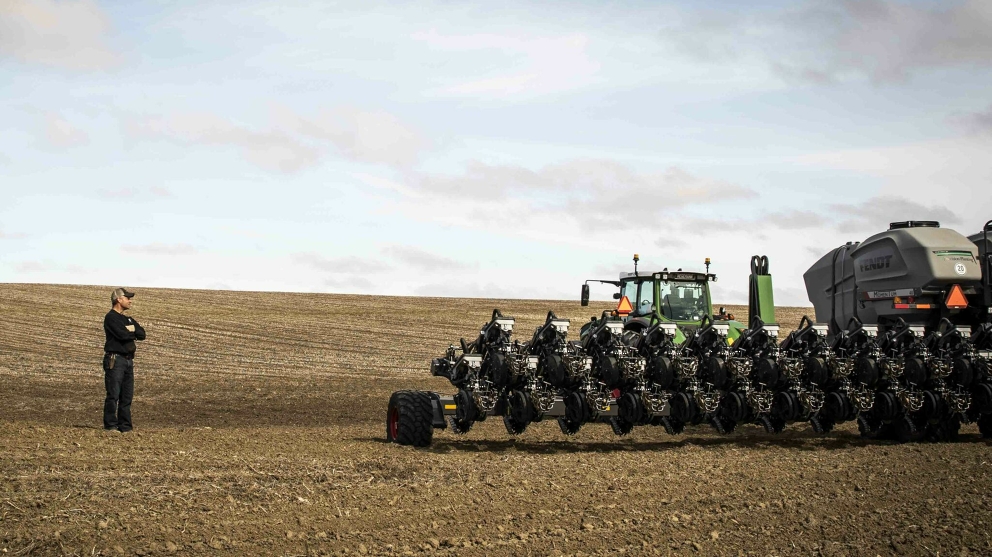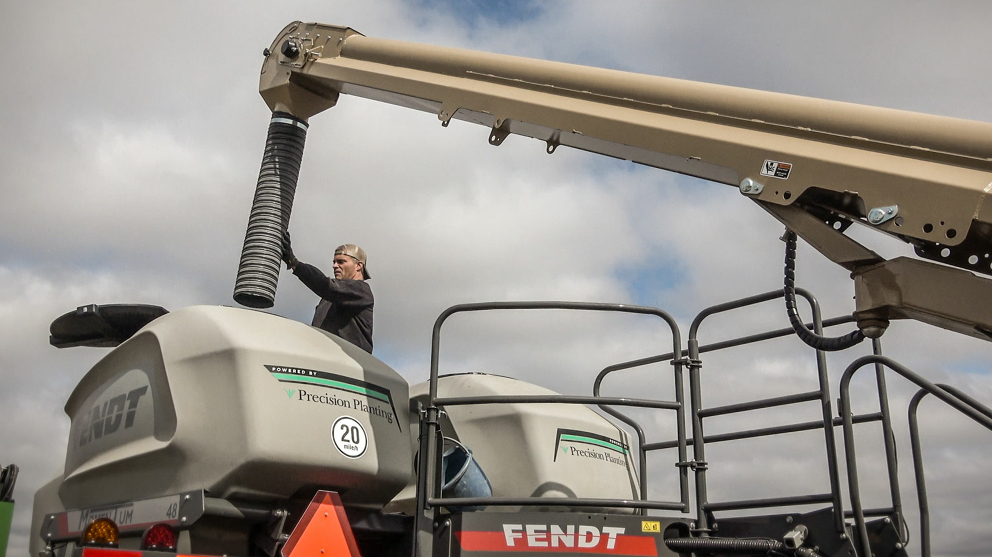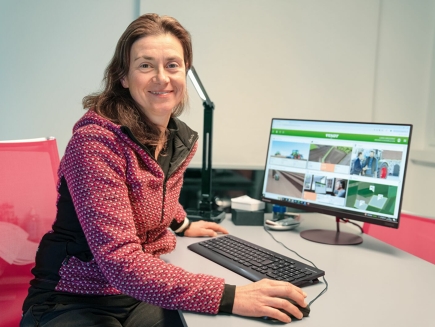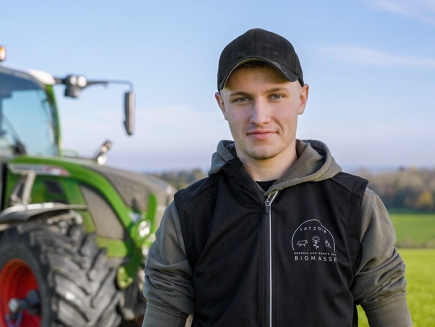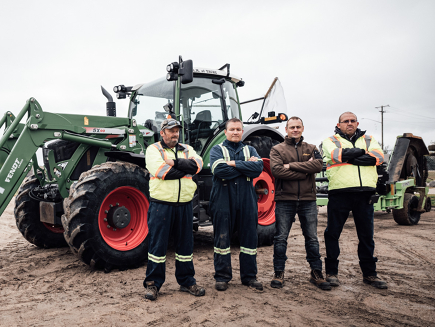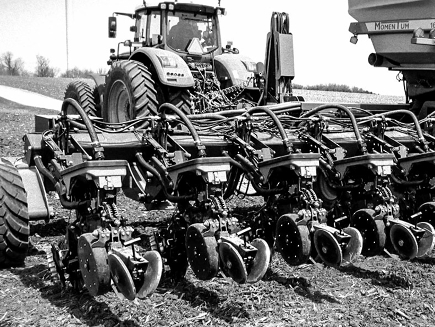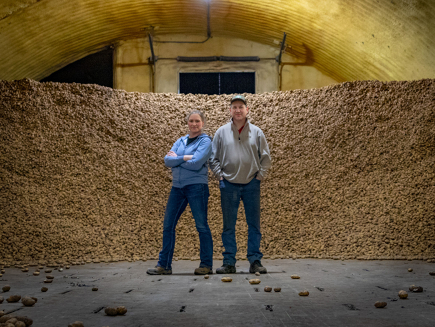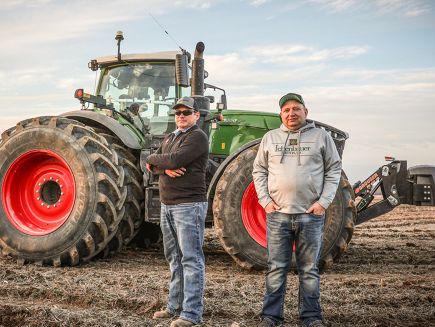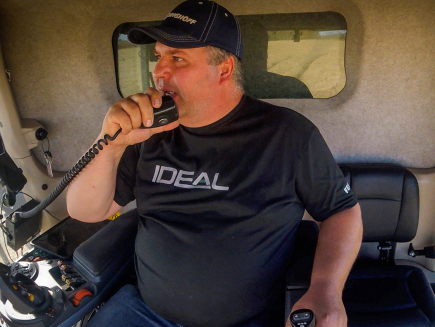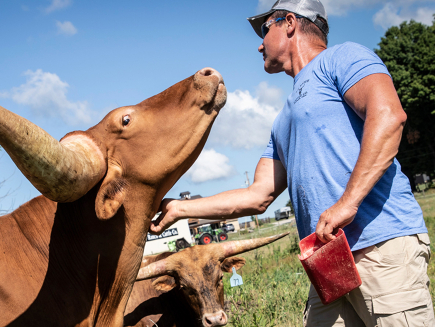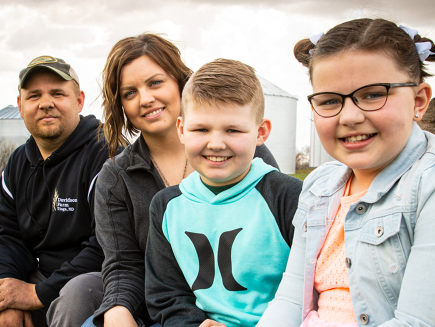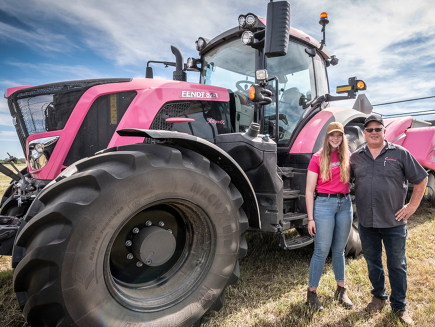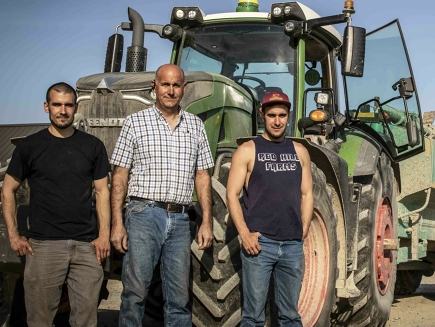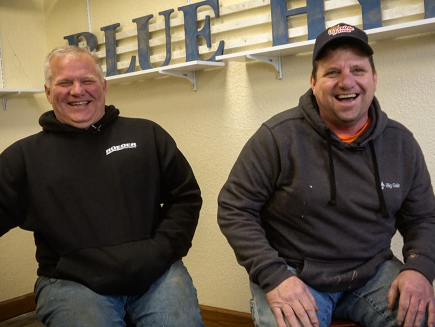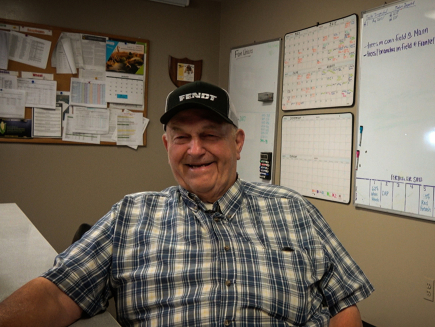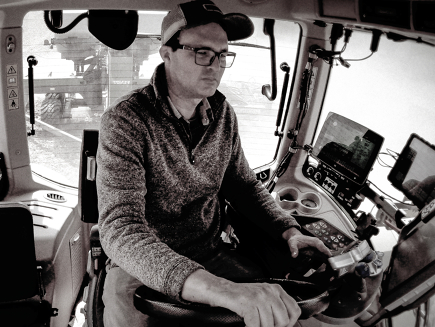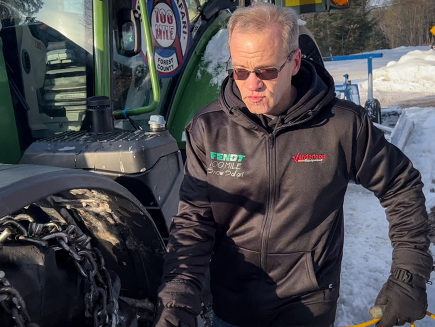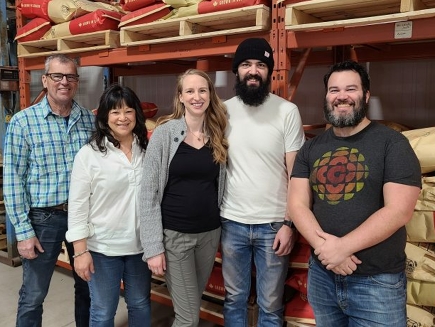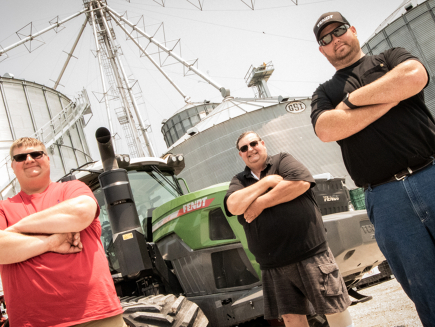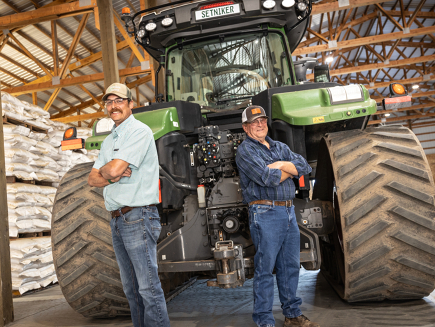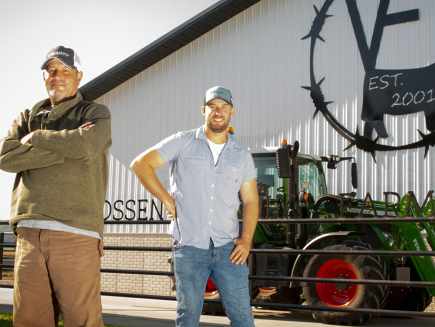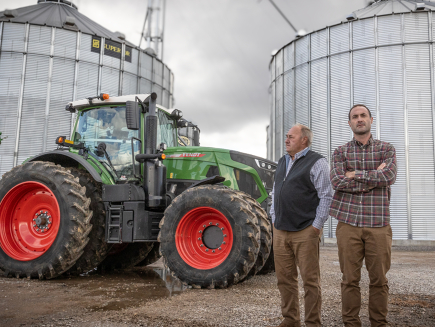Tony Hegemann is in the shop near some of the fields he farms in Newman Grove, Nebraska, doing business with other farmers and getting ready to take care of some of his own. The shop doubles as Hegemann Sunflower Sales and Service LLC, a short-line equipment dealership founded by Tony’s father in 1971. “Our goal was to help people, and still do our farming side of it, too,” says Tony.
Today, Tony is still helping people. He wears a headset pretty much all day long, listening for other farmers who may need the attentive brand of customer service he inherited from his father. The dealership mostly trades online. That’s a good thing, since the shop floor is dominated at the moment by a 48-row beast that’s about to take to the fields.
Tony is in his first season with a Fendt® Momentum™ planter, and this massive specimen is a far cry from his first experience with a planter, which he got when he was five years old. Seriously.
“My dad told me, ‘You’re not gonna get your corn planter until you know your ABCs,’” says Tony. “So I got my ABCs done, and I got my corn planter.”
It takes a minute to realize he’s talking about a toy. That becomes clear when he describes the grain bin system he built to go with it, a collection of wooden spools he was gluing to the floor, when his mom interrupted him. “You can’t glue that to the floor,” he recalls her saying, with a big laugh. “I was gluing it all together, I was making one,” he says. “I was my own engineer already, following dad’s footsteps.”
On a day like today, though, it might be good to just glue everything down. It’s time to plant; no time to waste, as per usual when planting season comes around. But when Tony opens the shop door, the wind whips in fast. It’s a steady 20 miles an hour, gusting to 35 or more. His recent upgrade in planter technology lets him move confidently into the field.
“It’s kind of up to you as the farmer to get that seed placed right,” he says. So, on a day like today, with the wind screaming, “you like to have your ducks in a row,” he says.
That doesn’t seem to be a problem for Tony. “I grew up learning to multitask,” he says. At its peak, Hegemann Sunflower Sales and Service was distributing for 75 companies, including the iconic Sunflower brand out of Beloit, Kansas, that is the family business namesake. The inventory for sale on TractorHouse.com is still diverse.
But given the conditions today, “helping people” might be the easiest, most pleasant part of Tony’s planting season. “Farming in Nebraska is a real challenge because we’re not flat,” says Tony. And, “it’s not high-grade soil.” Tony farms corn and soybeans, full rotation. “And, we do some cover crops to preserve the soil,” he says, noting again the “trials and tribulations of weather today.”
Some of the soils, “We no-till, some we will do a deep ripping, just a single pass,” he says. All the prep and planting lend way to the stress of the growing season, when Nebraska becomes “the irrigation capital of the world,” he says, in July and August.
Cover crops and conservation efforts also help mitigate the vast differences in soil structure from one plot to another. “It’s crazy how you can drive ten miles and the soil structure changes, from sandy to heavy clay,” he says. Meanwhile, he says he envies the farmers further east in corn country. “I don’t want to pick on Illinois, but that would be great, farming there,” he laughs. “You don’t have those ditches and slopes to worry about. We are 18% slope one way 15 the other way,” he says. “We have to slow down for these deep canyon ditches; we’re not flat like…” he pauses, laughs: “Illinois.”
Tony says his favorite part of farming is probably on the Hegemann Sunflower Sales and Service business side. “I take joy in helping somebody with a piece of equipment that helps their farm thrive,” he says. And on his own farm? “When we’re harvesting and I’m sitting in the combine, that’s my favorite time of farming,” he says.
Not planting? “Planting is good, when all is good,” he laughs. “If we step back a few years, I don’t like to say it this way, but all we had was a set of idiot lights in front of us. It was a blinking light. And it said that you’re dropping seed,” he says. “Honestly, we didn’t know what we were doing unless we got a pocket knife out and went out there and dug to see if all the seeds are laying uniform.”
The challenges of farming on a slope, the time demands of beating weather to get the crop in the ground, and the yield consequences of improper seed depth and singulation all got Tony’s engineering gears turning. “I was to the point where I was almost going to build my own planter,” he says.
You get the feeling he could do it, but Tony finally found the right match for his challenges. “The planter… is the foundation of the farm,” he says. “Get that right, then you’re sailing good. "Seed is expensive,” says Kreg Main, a Central Illinois grower who just spent his first season using the Fendt® Momentum™ planter. “You want to actually try to do the best job you can to get that seed where you want it, how you want it, and what population you want it at and not be out there with doubles and skips.”
Story by Jamie Cole

